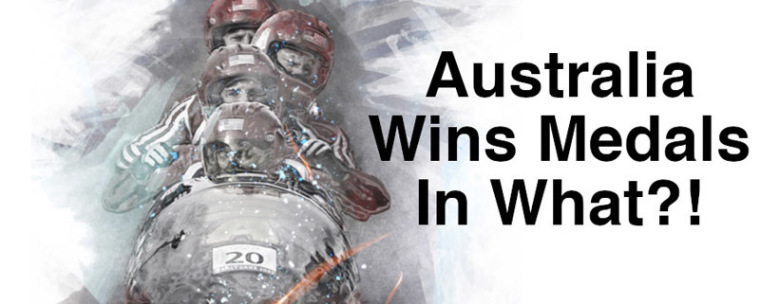
At the closing ceremony for the 2022 Beijing Winter Olympics, Australia came home with a grand medal tally of 4:
1 – Gold Jakara Anthony in Women’s Freestyle Mogul
2 – Silver Jaclyn Narracott in Women’s Skeleton
Scotty James in Men’s Snowboard Halfpipe
1 – Bronze Tess Coady in Women’s Snowboard Slopestyle.
The most amount of medals ever won by the Australian Winter Olympic Team.
History
The history of the Winter Olympics stems back to 1924 when over 250 athletes from 16 nations competed in 16 events in Chamonix, France. Not surprisingly the European and Scandinavian countries dominated the medal tally of these early games.
It wasn’t until 1936 Australia sent its first competitor; Kenneth Kennedy who competed in speed skating. Fast forward nearly 7 decades and it wasn’t until 1994 Australia climbed onto the medal tally winning bronze in the men’s short track relay team. Steven Bradbury, Alisa Campbell, Cool Runnings, and Eddie the Eagle are arguably colloquial names when it comes to the Winter Olympics.
Steven Bradbury became famous by winning Australia’s first-ever Gold medal at the games in the infamous 1000m race of 2002. The entire field in front of Bradbury crashed during the final lap, allowing him to claim the Gold. Bradbury was also part of the relay team in 1994 who secured Australia’s first medal.
2002 was the same year Alisa Campbell shone through in the Women’s aerial skiing, claiming Gold and shining brightly ever since. Campbell has been commentating for the Winter Olympics since her retirement.
With these history-makers still leaving a mark on the Winter Olympic stage – it is time to widen the stage as Australia welcome’s new athletes and inspirations to the stage. But what exactly did we win medals in? Skeleton sounds like something you keep in the closest, rather than proudly claiming to win a medal in.
Cool Runnings (1993), a movie about the Jamaican Bobsled team who became cult classics at the 1988 Calgary Olympics, pushed the sport of Bobsled into the homes of so many. Even today all you need to do is start the song “Ah, Jamaica’s got a bobsled team….” And will no doubt hear the reply “1, bob, 1 sled, that’s our team.” Now on the world stage, down the same track runs skeleton and luge. What is the difference?
Bobsled
Bobsled is as old as the Olympics themselves (1924), made famous by the Jamaican bobsled crew, and involves a team of 2 or 4 hurtling down a track in a ‘sled’. Men’s events allow for teams of 4 or 2 to hurtle down the course, whilst women compete in either 2 and for the first time this Olympics in mono-bob (singular). This is the most ‘team sport’ on the track where athletes gain traction sprinting over 50meteres before alighting in the sled.
The sleds have become more and more technical as the games continue. A ‘shell’ sits on a multi- pivoting axle that allows for twisting, steering, and braking. These are controlled by different pulls on strings by the front driver, and brakes by the back athlete.
Sleds can reach up to 125km/hr down the track, and much more than just ‘sit down and hang on, the steering and body position of athletes determine entry and exit points on corners, and ultimately speed and time down the track.
Australia had 4 athletes represent the nation in the bobsled this year: Bree Walker, Jacyln Narracott, Kiara Reddingius, and Nick Timmings.
Luge
From sitting upright with your fellow athletes to getting as close to the ice as you can. Luge, has athletes hurtling along the track reaching speeds of 125-140km/hr. It is one of the fastest winter Olympic team sports. Luge is completed either in pairs or individually.
The starting track has participants sitting up scooting along the ice with their hands to gain as much speed as possible before lying down on the sled. In pairs Luge, the bigger participant lies on top to help with aerodynamics whilst hurtling down track’s twists and turns.
Athletes steer their craft at speed by shifting their body position, depressing their shoulders on one end, and applying pressure to the inside of their calves steering. Australia had only Alexander Ferlazzo representing this year at the Games.
Skeleton
All Winter Olympic sports hold some element of risk, that may be the attraction of the Games for both the athletes and spectators. One event that may hold some of the highest ‘perceived risk’ is the Skeleton.
Imagine going from Bobsled, feeling safe inside a sleigh, to Luge, lying down, feet first, through to facing the same track head-on. The skeleton is a single-person event that starts with athletes pushing the sled 40metres before lying prone face first. Athletes reach speeds comparable to Luge and bobsled, dragging their feet behind them to render control on the track.
This year Jacyln Narracott brought home silver in the women’s event leading to one of our 4 medals whilst Nick Timmings represented the men.
The next winter Olympics will be held in Milano-Cortina, Italy in 2026.

Kelly Thompson is the newest member of the Sports journalist team. Kelly currently plays AFL for Casey Demons in the VFLW, and practices what she preaches as a HOPE (Health, Outdoor, and Physical Education) Teacher in Melbourne’s southeast.